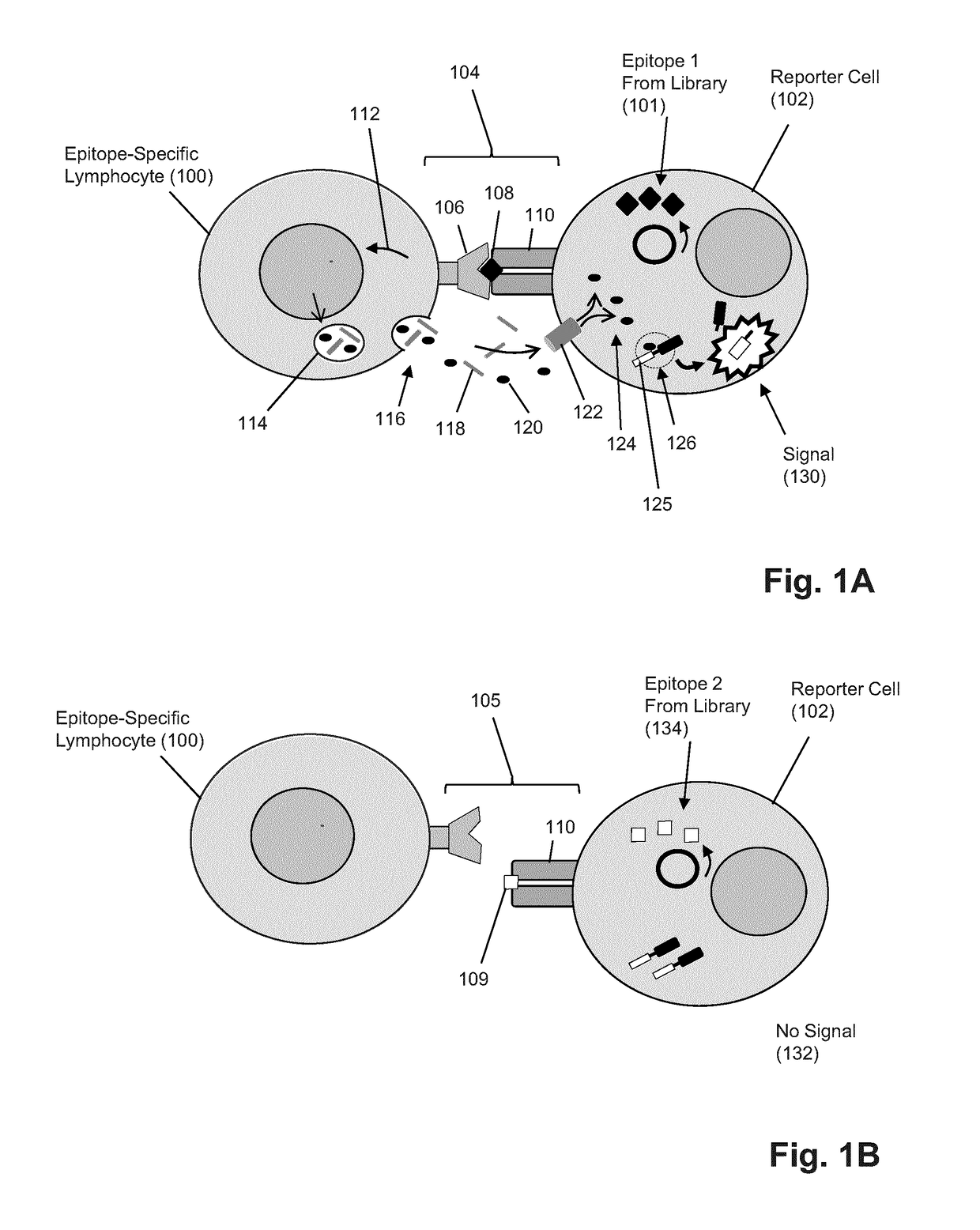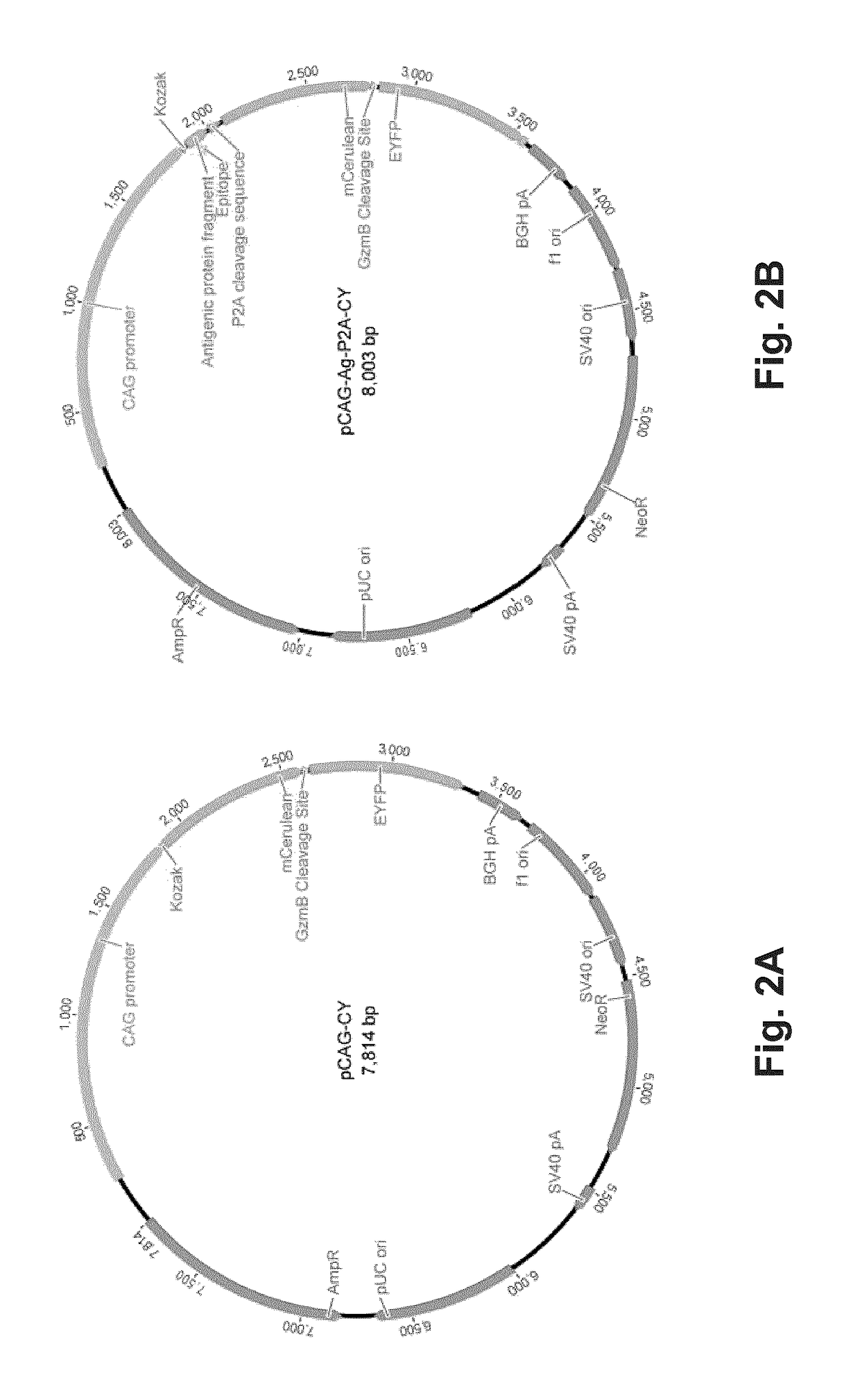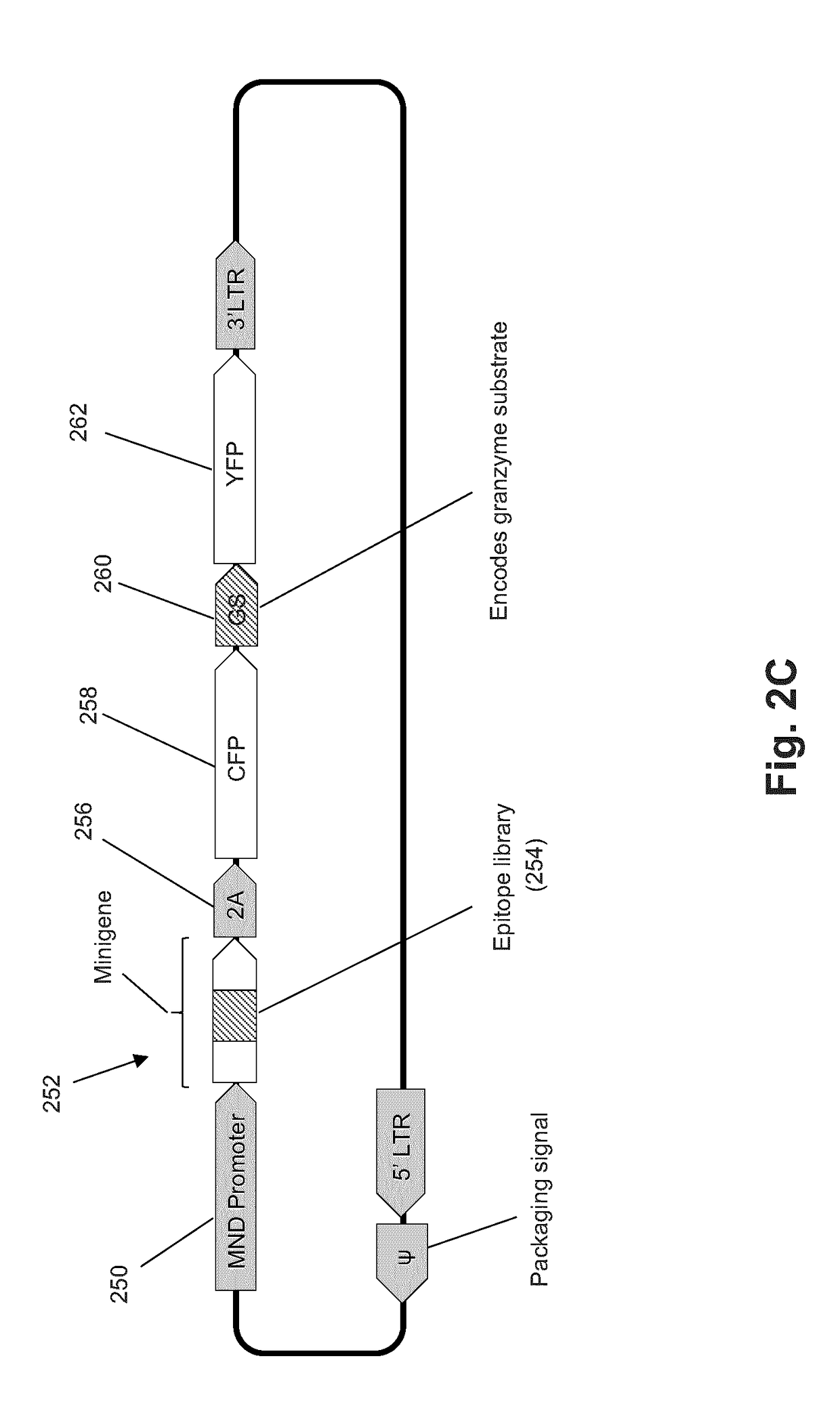T-cell epitope identification
a technology of epitope identification and t-cell, which is applied in the field of t-cell epitope identification, can solve the problems of not having a practical high-throughput method available for routine identification, and achieve the effect of effectively clearing acute and latent infections
- Summary
- Abstract
- Description
- Claims
- Application Information
AI Technical Summary
Benefits of technology
Problems solved by technology
Method used
Image
Examples
example 1
Model Assays Based on Stably Transfected Mouse Lymphoblastic Cell Lines EL4 and EG7 as Model Reporter Cells
[0066]In this example, CTLs were primary CD8+ splenocytes from OT-I transgenic mice which express an invariant TCR specific for the model ovalbumin (Ova) epitope SIINFEKL. The model APCs in this system are the mouse lymphoblast cell lines EL4 and a stably Ova-transfected derivative, EG7-Ova. To detect a cytotoxic hit to an APC by CTLs, the fluorogenic CellEvent™ Caspase-3 / 7 Green Detection Reagent from Invitrogen (Carlbad, Calif.) was used to detect the induction of apoptosis. Alternatively, a genetically-encoded CFP-YFP fusion FRET pair separated by a granzyme B (GzmB)-cleavable linker (FIGS. 2A-2B) may also be used. Experiments observing CTL attack on target APC using CellEvent™ Caspase 3 / 7 Detection Reagent have shown that induction of apoptosis is readily detectable by flow cytometry after as little as 1 hour. Further, persistence of signal is observed 24 hours (FIGS. 3A an...
example 2
Confirming Function of Granzyme B-Sensitive Signal Generation Product
[0068]Testing of a granzyme B (GzmB)-sensitive signal generating product was carried out in an NK-92MI-HeLa system. NK-92MI is a human natural cell killer line which is capable of cytoxicity via the GzmB pathway and the widely used cervical cancer line, HeLa, is a known target of these NK-92MI. The ease of transfection of HeLa cells and the non-epitope restricted cytotoxicity of NK-92MI provide an excellent platform for the assessment of GzmB-specific reporter systems. The data in FIG. 4 show a decrease of FRET signal and a concomitant increase in CFP signal resulting in a when NK-92MI are cultured with CFP-YFP HeLa transfectants. The resulting diagonal shift in FRET vs. CFP plots is large enough to enable gating of putative positive targets from negatives.
example 3
Model Assays Based on Stably Transfected Mouse Ovarian Cell Lines ID8 and ID8.G7-Ova as Reporter Cells
[0069]In this example, experiments were carried out to test the ability of the sort-and-sequence method to enrich for a population of cells containing the appropriate target antigen sequence. FIG. 5A shows the experimental workflow and results from the experiment. CTLs were primary CD8+ splenocytes from OT-I transgenic mice which express an invariant TCR specific for the model ovalbumin (Ova) epitope SIINFEKL. There are no immortalized CD8+ T-cell lines available that retain cytolytic function. Therefore, for initial development, a CTL system comprising replenishable primary CD8+ splenocytes from OT-I transgenic mice was used. These CD8+ T-cells express an invariant TCR specific for the model chicken ovalbumin antigen SIINFEKL, which is irrelevant biologically but is a high-affinity binder to the mouse MHC class I molecule H-2Kb. The model reporter cells in this system are the mouse...
PUM
| Property | Measurement | Unit |
|---|---|---|
| Fluorescence | aaaaa | aaaaa |
| Cytotoxicity | aaaaa | aaaaa |
Abstract
Description
Claims
Application Information
 Login to View More
Login to View More - R&D
- Intellectual Property
- Life Sciences
- Materials
- Tech Scout
- Unparalleled Data Quality
- Higher Quality Content
- 60% Fewer Hallucinations
Browse by: Latest US Patents, China's latest patents, Technical Efficacy Thesaurus, Application Domain, Technology Topic, Popular Technical Reports.
© 2025 PatSnap. All rights reserved.Legal|Privacy policy|Modern Slavery Act Transparency Statement|Sitemap|About US| Contact US: help@patsnap.com



